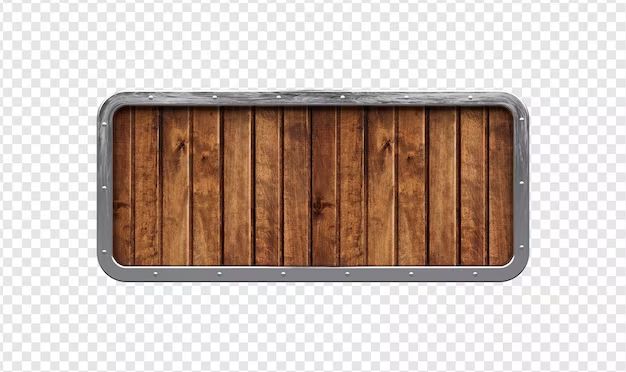Iron on wood edging, also known as iron on edge banding, is a great way to cover up the exposed edges of plywood, particle board, and MDF. It creates a clean, finished look and protects the edges from wear and tear. Installing iron on edging is an easy process that can be done with just a few tools and materials.
Page Contents
Benefits of Using Iron on Wood Edging
There are several benefits to using iron on wood edging:
- It covers up unsightly edges and imperfections. Plywood, particle board, and MDF all have an unfinished inner core that looks unattractive when exposed.
- It creates a uniform look. Iron on edging unifies the appearance of your material’s edges.
- It’s durable. The edge banding protects the edges and prevents splintering, cracking and peeling.
- It’s inexpensive. Iron on edging comes in rolls and is an affordable way to finish edges.
- It’s easy to install. Applying iron on edging is a simple process that doesn’t require special skills.
- It provides a professional finish. The completed look is very polished and high-end.
Using iron on veneer edging transforms ordinary plywood into something that looks like solid hardwood. It can make DIY furniture and cabinetry look store-bought.
Materials Needed
Installing iron on edging requires just a few materials:
- Iron on wood edging. This comes in different wood species, colors, and widths to match your project.
- Metal iron or laminate trimmer. You’ll need a heat source to activate the glue on the edging.
- Sandpaper. Fine grit sandpaper helps smooth out the edges.
- Edge trimmer. A specialty tool helps trim excess edging but isn’t required.
- Wood glue. Can be used in addition to the adhesive on the edge banding.
- Protective gloves and eyewear.
- Clean rag.
Before starting, remove any existing edging or trim from the surface you are going to cover. Make sure the surface is smooth, clean and dry.
How to Install Iron on Wood Edging
Installing iron on edging is a quick and easy process. Follow these steps:
Step 1: Cut Edging to Length
Measure the length of the edge you are covering and cut the iron on edging to size. Add 2-3 extra inches to the length to allow for mistakes. Use a utility knife on a cutting mat or metal straight edge for clean, smooth cuts.
Step 2: Activate the Adhesive
Turn on your metal iron or laminate trimmer and allow it to heat up for a few minutes. Run the hot iron or trimmer along the length of the backside of the edging to activate the heat-sensitive glue. Be careful not to scorch or burn the edging.
Step 3: Apply the Edging
Once activated, quickly apply the hot edging to the edge of the substrate, adhesive side down. Apply firm, even pressure for 20-30 seconds as the edging bonds. Use a rubber roller over the top to help adhere it evenly and remove bubbles.
Step 4: Trim the Edging
For a straight edge like a tabletop or counter, trim off excess edging using a utility knife and metal straight edge. For rounded/contoured edges, use an edge trimmer for the cleanest finish. Trim evenly and smoothly with the substrate edge.
Step 5: Secure With Wood Glue
For extra strength and insurance against future delamination, run a thin bead of wood glue along the seam where the edging meets the substrate. Wipe away any excess glue with a damp rag. Allow the glue to dry completely.
Step 6: Sand the Edging
Once the edging is adhered and trimmed, sand with fine grit sandpaper to smooth out any uneven spots and remove rough areas. Be careful not to sand through the veneer. Wipe away dust with a clean cloth.
Step 7: Finish and Seal
Apply your choice of finish, like paint, stain, polyurethane, etc. to protect the edging and give it a polished completed look. Allow any finishes to dry fully before using the surface.
Tips for Installation
Here are some helpful tips for iron on edge banding installation:
- Work in a well-ventilated area since glues and adhesives can produce fumes.
- Be extremely careful when working with hot metal irons and laminate trimmers to avoid burns.
- Make sure the substrate edge is smooth, not curved or rounded.
- Don’t remove the adhesive backing until you are ready to adhere the edging.
- Use a test piece first to get the right iron temperature and timing down.
- Apply as much downward pressure as possible when adhering the edging.
- If gaps appear, you can fill them with wood filler before finishing.
- Consider pre-gluing the edge banding for added strength and durability.
Common Problems and Solutions
While iron on edging is designed to be easy to install, there are times when problems occur. Here are some common issues and how to fix them:
| Problem | Solution |
|---|---|
| Bubbles or wrinkles in the edging | Reactivate the glue and use a roller to press edging smooth. |
| Edging not adhering tightly | Make sure substrate is smooth/clean. Roughen surface lightly with sandpaper. Reapply edging. |
| Edges lifting up | Sand edges smooth, apply wood glue underneath, clamp edging back down until dry. |
| Uneven cutting line | Use a new sharp utility blade and metal straight edge as a guide. |
| Scuffs, burns or discoloration | Gently sand edging and refinish or touch up with stain/paint. |
Conclusion
Adding iron on edge banding is an easy DIY project that can transform the look of basic materials like plywood. Just clean and prepare the substrate edge, measure and cut edging to size, activate the adhesive, adhere the edging, trim and sand smooth. Take care when working with hot metal edging tools. Additional glue and a protective finish will help the edging last for years. With a little practice, you can achieve clean, professional looking edges.
